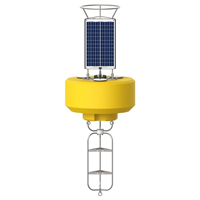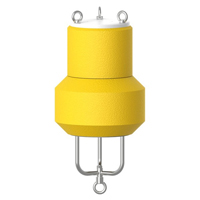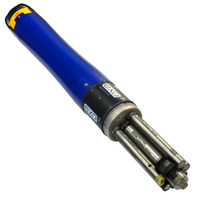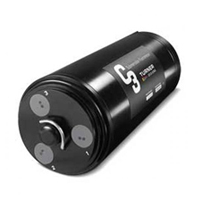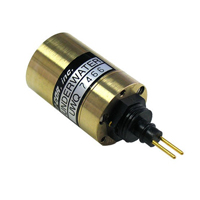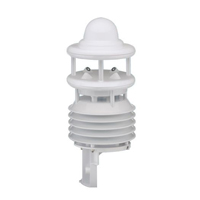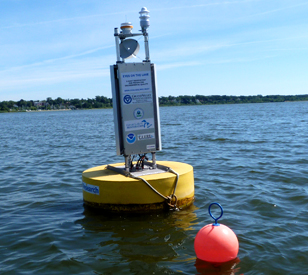 In 1985, Muskegon Lake was designated an Area of Concern by the U.S. EPA because of water quality and habitat problems associated with pollution discharged into its waters. The water body, which sits between the eastern shore of Lake Michigan and the Muskegon River, has been the site of remediation work ever since.
In 1985, Muskegon Lake was designated an Area of Concern by the U.S. EPA because of water quality and habitat problems associated with pollution discharged into its waters. The water body, which sits between the eastern shore of Lake Michigan and the Muskegon River, has been the site of remediation work ever since.
In line with work to bring the lake back from its status as an Area of Concern, scientists at Grand Valley State University launched a massive data-collection system in spring 2011. Comprised of two buoys and dozens of sensors to measure the lake’s health, the system is cluing researchers in to Muskegon Lake’s dynamics like never before.
What’s more, the system is helping scientists at the EPA and elsewhere track the progress of work to restore the lake while giving teachers in nearby schools a real-world example to help their students learn scientific principles.
Tracking AOC restorations
The highly advanced system is centered by a custom-designed NexSens data buoy with more than 1400 pounds of buoyancy. Outfitted with solar panels to power the whole system below and above the lake’s surface, the massive buoy also supports a Lufft WS600 Multi-Parameter Weather Sensor that collects data on wind speed and direction, air temperature, humidity, barometric pressure and precipitation. A data logger housed securely in the buoy records information sent from the Lufft, as well as all equipment below, and transmits it to researchers at Grand Valley State via cellular telemetry.
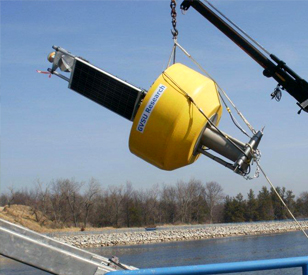
Below the surface is where things get interesting. An Acoustic Doppler Current Profiler was deployed on Muskegon Lake’s bottom. The profiler communicates with the custom-built buoy and data logger and collects data on current velocity and water level. Deployed many meters to the other side of the ADCP is a NexSens MB-100 that rests underwater. It connects to the above-water buoy’s data logger and acts as a slave during operation.
A string of sensors beneath the MB-100 subsurface buoy includes NexSens T-Node Thermistors to collect measures of water temperature at varying depths; three YSI 6600 Multi-Parameter Water Quality Sondes and one YSI 6920 Sonde to measure temperature, conductivity, depth, pH, turbidity and dissolved oxygen; and a LI-COR LI-192 Underwater PAR Sensor that measures the sunlight’s penetration into the water column. In addition, a Turner Designs C3 Submersible Fluorometer, outfitted with multiple optical sensors, captures measurements of phycocyanin (blue-green algae), CDOM (colored dissolved organic matter) and Chlorophyll. Data on nitrates are collected by a Satlantic SUNA nitrate analyzer.
Together, the state-of-the-art sensors constitute one of the most complete remote sensing platforms deployed in the Great Lakes basin. And their findings are important for the EPA as well as those working to restore Muskegon Lake.
The CB-1250 offers increased flotation and solar charging for heavy or power-hungry sensors while still maintaining a relatively small footprint.
The CB-50 data buoy is designed for quick deployment in emergency response situations including industrial spills and natural disasters.
The Turner Designs C3 Submersible Fluorometer is designed to incorporate up to three optical sensors ranging from the ultraviolet to the infrared spectrum.
The LI-COR LI-192 Underwater PAR Sensor Quantum sensor accurately measures photosynthetically active radiation (PAR) in freshwater or saltwater environments.
The Lufft WS600 Multi-Parameter Weather Sensor simultaneously measures air temperature, humidity, pressure, precipitation & wind with an integrated electronic compass for corrected wind direction on moving platforms.

